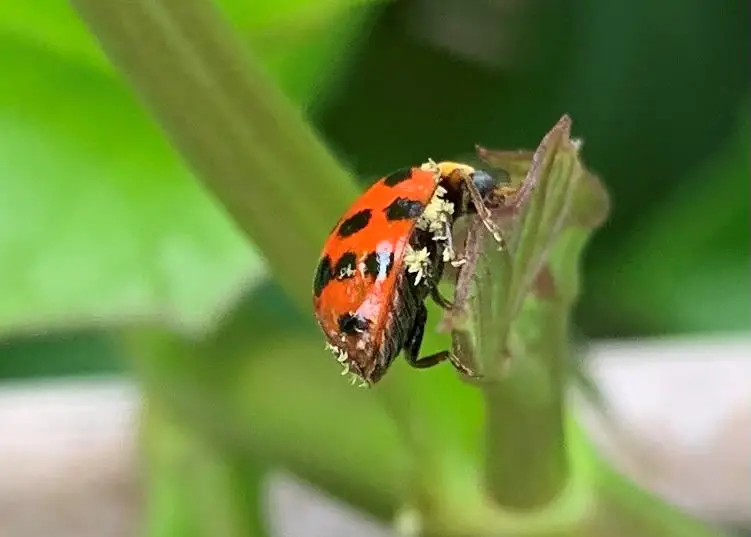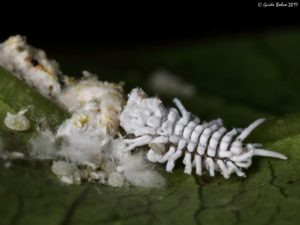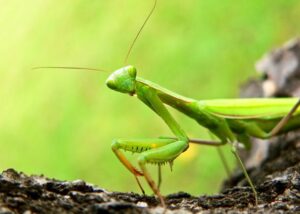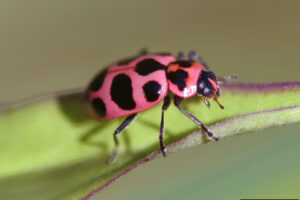Perhaps the last thing we would associate with the diminutive red beetle with the black spots is a sexually transmitted disease. But believe it or not, ladybugs, or ladybirds and lady beetles as they are also sometimes called, can contract a disease that is transmitted during copulation. As it turns out, the STD culprit is a fungus called Hesperomyces virescens, which is in the Laboulbeniales order.
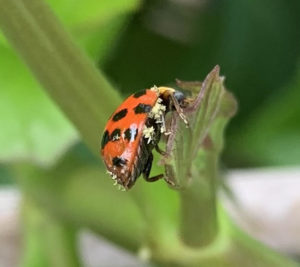
Ladybugs and Hesperomyces Virescens
Often when we think of fungi, mushrooms come to mind. But not all fungi produce mushrooms. Hesperomyces virescens, for example, is a parasitic fungus that develops yellow, finger-like growths that pierce into the hard outer shell of the beetle to suck its blood, or more accurately, its hemolymph, the circulatory fluid that functions as blood in arthropods and as lymph in other invertebrates. The insect’s vital fluids provide the fungus with the nutrients necessary to live. Hesperomyces virescens is also known as the beetle hanger because the growth looks as if it is hanging onto the beetle.
Ladybugs are easy targets for the fungus because they copulate for a minimum of thirty minutes, giving the opportunistic hitchhiking fungus plenty of time to be transferred from the infected beetle to its unsuspecting partner. And because ladybugs mate frequently and with multiple partners, the “blood-thirsty” fungus can easily spread from one beetle to another.
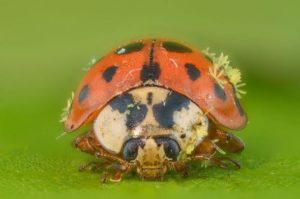
The fungal infection begins when a spore attaches itself to the beetle’s outer shell or elytra. The spore then develops a “foot,” which bores into the beetle’s exoskeleton, where it grows a branch-like structure that acts to absorb nutrients from the hemolymph inside the insect. The fungus then develops a male and female part, which allows it to reproduce. When the trigger end of the fungus comes into contact with another ladybug, or some other point of contact, more spores are released. The fungus then spreads to a new area on the host ladybug or to a new beetle. The fungus can reproduce to the extent that it looks like a yellow shag rug is covering the beetle.

The iconic red and black beetle, which is considered a beneficial insect because it preys on less desirable insects like aphids, whiteflies, and mealybugs, is not the only insect that can get the sexually transmitted disease. Other varieties of ladybugs, as well as other insects with exoskeletons, are also susceptible. For example, arachnids, centipedes, millipedes, and crustaceans are all potential hosts for the fungal infection. The good news is that the fungus is specific to arthropods and therefore, harmless to humans. Thankfully, the parasitic fungus generally does not kill its host, although it may compromise its health and reduce its egg production. At some point, the fungus may shorten the beetle’s lifespan if the infection is advanced. Most ladybugs, however, live a productive life despite the infection, and if found, they should be left alone to work in the garden.
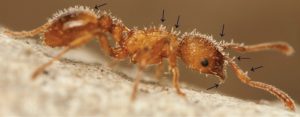
Socially Transmitted
Ladybugs are cold-blooded insects, which means they need an external heat source in order to maintain a proper body temperature. It is common, therefore, for ladybugs to congregate in a warm place where they will hibernate through the winter together. One scientific study reported that it is conditions like these that may provide a breeding ground for the shag-like fungus. When the beetles are huddled together, with their outer shells or elytra touching, spores are able easily spread. Thus, Hesperomyces virescens may be socially transmitted in addition to being sexually transmitted. Understandably, the fungus can also spread to different areas of the same beetle when it self-grooms.
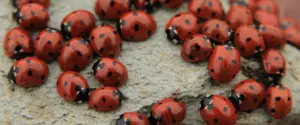
Thank you for reading this article! If you found it helpful, please consider sharing it with others via email and social media!
